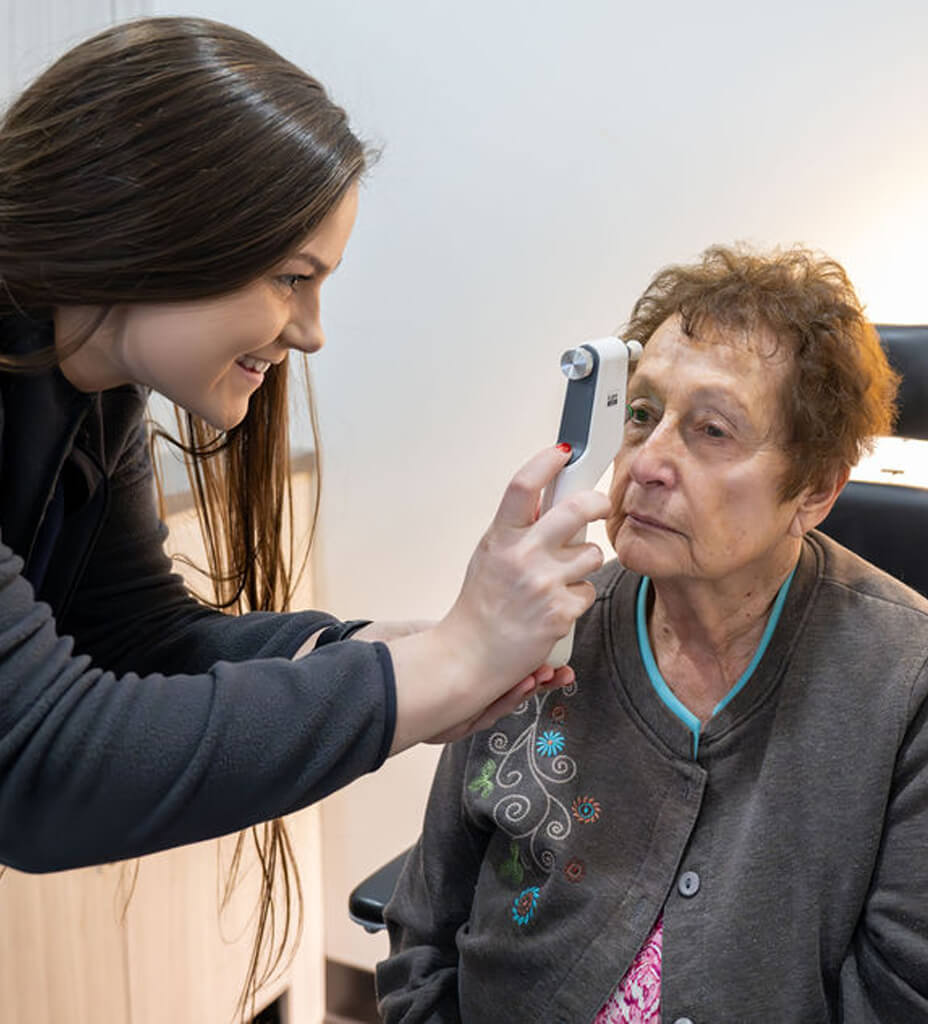Common Eye Diseases

Common Eye Diseases
Common Eye Diseases: Symptoms and Treatment Options
At The Eyes on Group, we believe in educating our patients about common eye diseases so they can recognize symptoms early and seek treatment. Here’s an overview of some of the most common eye conditions, their symptoms, and available treatments.
Read More
Read Less
- Cataracts
- Symptoms: Blurry or cloudy vision, difficulty seeing at night, sensitivity to light, faded colors, double vision in one eye.
- Treatment: Early-stage cataracts may be managed with new glasses or brighter lighting. However, if cataracts significantly affect vision, surgery is the only effective treatment. Cataract surgery involves removing the cloudy lens and replacing it with a clear, artificial lens.
- Glaucoma
- Symptoms: Often no symptoms in early stages, gradual loss of peripheral vision, tunnel vision, eye pain, nausea, and vomiting in severe cases.
- Treatment: Glaucoma is treated with medications (eye drops), laser treatments, or surgery to lower eye pressure. Regular monitoring and early detection are key to preventing permanent vision loss.
- Age-Related Macular Degeneration (AMD)
- Symptoms: Blurry vision, difficulty seeing fine details, straight lines appearing wavy, dark or empty areas in the center of vision.
- Treatment: There are two types of AMD: dry and wet. Dry AMD has no cure but can be managed with vitamin supplements and lifestyle changes. Wet AMD may be treated with injections into the eye or laser surgery to slow progression.
- Diabetic Retinopathy
- Symptoms: Blurred vision, floating spots or dark strings, difficulty seeing at night, vision loss.
- Treatment: Treatment for diabetic retinopathy includes laser surgery, vitrectomy (removal of blood from the eye), and injections to reduce swelling in the retina. Controlling blood sugar is critical in managing the disease.
- Dry Eye Disease
- Symptoms: Red, itchy, or burning eyes, a feeling of grittiness, blurred vision, excessive tearing, sensitivity to light.
- Treatment: Treatments include lubricating eye drops, prescription eye medications, and in more severe cases, punctal plugs (to block tear drainage) or surgery to address underlying causes.
- Conjunctivitis (Pink Eye)
- Symptoms: Redness, irritation, itching, watery eyes, discharge, crusting of eyelashes, sensitivity to light.
- Treatment: Treatment depends on the cause (viral, bacterial, or allergic). Antibiotic eye drops are used for bacterial conjunctivitis, while antihistamine drops may be prescribed for allergic conjunctivitis. Viral conjunctivitis usually resolves on its own.
- Retinal Detachment
- Symptoms: Sudden flashes of light, floaters, a shadow or curtain in the peripheral vision, or loss of vision.
- Treatment: Retinal detachment is a medical emergency and requires surgery to reattach the retina. Treatment options may include laser surgery, cryotherapy (freezing), or vitrectomy.
- Amblyopia (Lazy Eye)
- Symptoms: One eye is weaker than the other, poor depth perception, squinting, and trouble focusing.
- Treatment: Treatment often involves patching the stronger eye to encourage the weaker eye to strengthen, along with glasses or vision therapy to improve visual acuity.
- Astigmatism
- Symptoms: Blurred or distorted vision, difficulty seeing at night, eye strain, headaches.
- Treatment: Astigmatism is corrected with glasses, contact lenses, or refractive surgery (like LASIK) to reshape the cornea for clearer vision.
- Keratoconus
- Symptoms: Blurred vision, sensitivity to light, double vision, frequent changes in prescription glasses.
- Treatment: Treatment may include specialized contact lenses, corneal cross-linking (a procedure to strengthen the cornea), or, in severe cases, corneal transplant surgery.